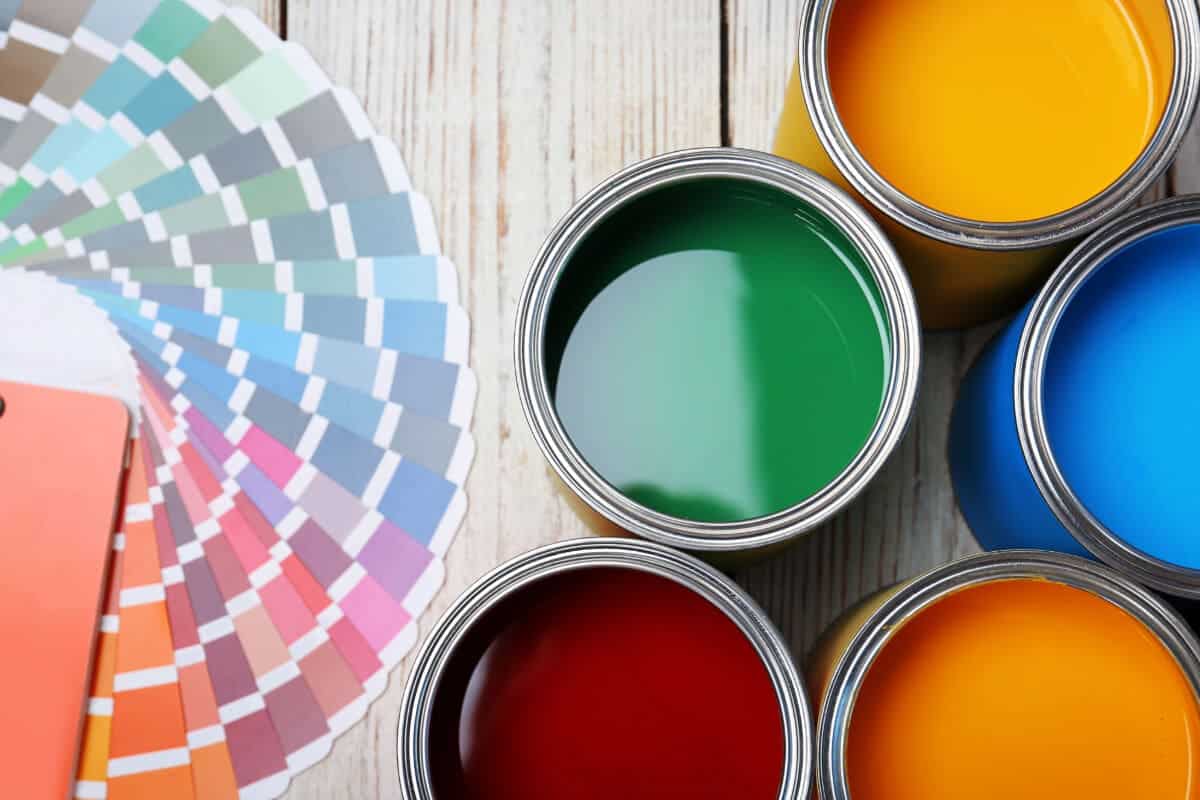Have you ever walked into a room and felt calm, energized, or inspired? Believe it or not, the paint color on the walls can significantly impact our emotions and behavior. With an endless rainbow of hues, choosing the perfect paint for your space might seem overwhelming—like standing in front of a giant canvas with a palette full of colors, not sure where to start.
But don’t worry! We’re here to explore the fascinating world of color psychology in interior design, uncover the hottest paint color trends, and offer tips on selecting the right shade to reflect your style.
Table of Contents
- Psychology of Color in Interior Design
- The Color Impact on Our Behavior at Home
- Current Paint Color Trends
- Choosing the Right Paint for Your Space
- Sustainable Paint Options
- Eco-Friendly Paint Choices for Your Home
- What Makes Paint Eco-Friendly?
- The Benefits of Natural Paint Ingredients
- The Role of Recycled Paint
- Applying Eco-Friendly Paints
- Maintenance and Durability
- Color Trends and Eco-Friendly Paints
- Disposal and Recycling of Eco-Friendly Paints
- The Cost of Choosing Green
- DIY Paint Projects and Techniques
- Related Content
Psychology of Color in Interior Design
Understanding Color Psychology
Color psychology is the study that links specific colors to emotional and behavioral reactions. Designers often use color psychology to create spaces that evoke certain feelings. Each color uniquely affects our moods, and understanding these can be essential when deciding on a palette for your home.
Warm Colors: Red, Orange, and Yellow
Warm colors evoke warmth and comfort but operate at the other end of the spectrum, stimulating conversations and appetites. This makes them excellent choices for living spaces and dining areas. However, they should be used moderately, as they can sometimes lead to feelings of anger or frustration.
- Red energizes and inspires a sense of passion. Its intensity can raise the energy in a room, making it an ideal accent color.
- Orange is friendly and inviting, promoting comfort. Perfect for playrooms, it encourages activity and enthusiasm.
- Yellow radiates happiness and stimulates the intellect, making it a great hue for kitchens or home offices.
Cool Colors: Blue, Green, and Purple
Cool colors are linked with calmness and tranquility, providing a serene vibe. These hues are superb options for bedrooms and bathrooms where relaxation is a priority. However, certain shades can sometimes come off as cold, so balancing them with warm textiles or decor is key.
- Blue is calming and can promote better sleep, so it’s a popular bedroom color.
- Green combines the cheerfulness of yellow with the soothing quality of blue. It’s restorative, encouraging a sense of balance and peace.
- Purple in its lighter shades, like lavender, offers a restful quality similar to blue but with regal warmth.
Neutral Colors: White, Gray, Black, Brown, and Beige
Neutrals are a design staple because of their versatility and ability to balance out other colors. They can also stand alone, creating an elegant or comforting backdrop, depending on the chosen shade and texture of the materials.
- White reflects light and creates a spacious feel, promoting cleanliness and simplicity.
- Gray is timeless and sophisticated, though it requires careful handling to avoid a dreary atmosphere.
- Black adds drama and depth, perfect for accentuating spaces.
- Brown brings in a natural, grounding element commonly associated with reliability and support.
- Beige is a cozy neutral, offering warmth and flexibility in decor.
Tips for Choosing Colors for Your Home
When selecting paint colors for your home, consider the room’s function, size, lighting, and desired mood. Light colors make spaces feel larger, which is ideal for small rooms. Vibrant colors can be perfect for areas where energy and interaction are desired.
The Color Impact on Our Behavior at Home
Colors do more than just set the mood; they can also influence our behavior. For example, blue can enhance productivity, making it a desirable home office option. On the other hand, greener hues can foster relaxation and are often used to create a calming effect in living spaces.
Understanding the psychological effects of colors can help you strategically select palettes for a harmonious home. It’s about finding the right balance to suit your aesthetic and well-being. Play with different combinations, layering them through paint, furniture, and accessories for a cohesive, mood-enhancing space.
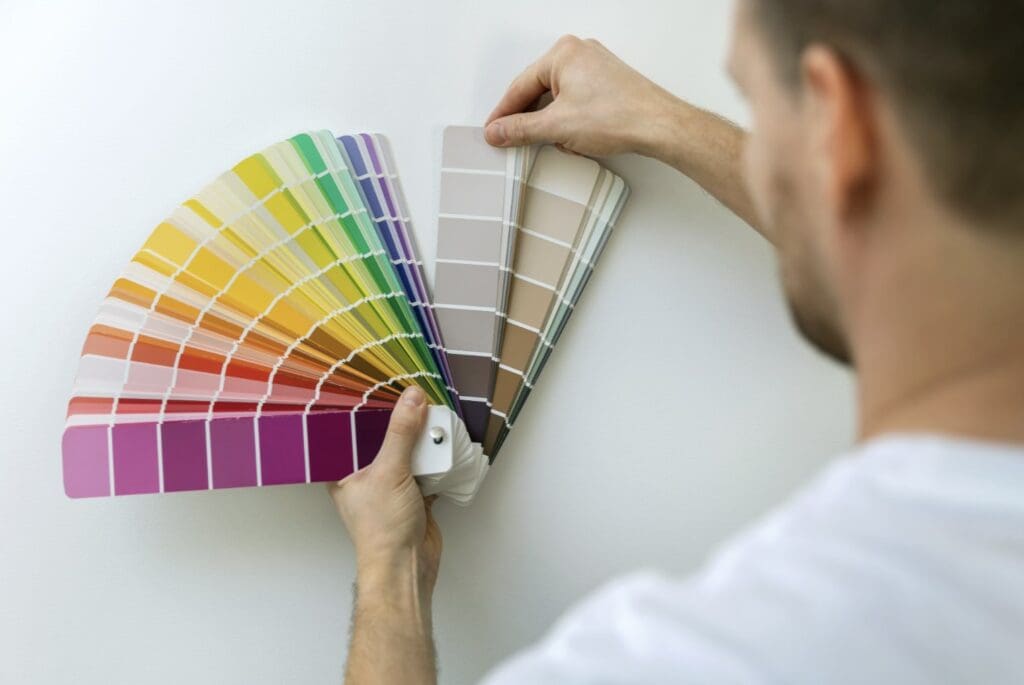
Current Paint Color Trends
In the rapidly evolving landscape of interior design, paint colors play a pivotal role in defining the ambiance and mood of a living space. As we delve into the color trends dominating 2024’s interior design scene, we see a marked preference for earthy tones that evoke a sense of peace and groundedness.
Among the leading colors, gentle browns and terracottas steal the spotlight, offering spaces an anchor to the natural world. These warm, soil-inspired shades provide a comforting embrace, perfect for living rooms and bedrooms where relaxation is paramount.
Equally prominent are the greens—ranging from soft sages to rich olives—that mirror the lush serenity of nature. Homeowners are leaning towards these verdant colors for their therapeutic properties, creating havens of tranquility in their private quarters.
Not to be overlooked are the subtle yet sophisticated taupes and muted pinks. These understated hues are the new neutrals, delivering a contemporary twist on classic color schemes. They inject warmth into the home, striking a lovely balance between minimalism and coziness.
Blues continue to make waves in interior design as a nod to the sky and sea. However, the current year favors a particular breed of blue—a soft, dusky variation that straddles the line between cool and warm. This versatile shade pairs beautifully with richly stained woods and natural fiber textiles, embodying a relaxed, beachy vibe regardless of the geographical context.
The influence of biophilic design is evident, as colors are increasingly sourced from the environment itself. By embracing hues that one would encounter outdoors, designers and homeowners alike can create a subtle blurring of indoor and outdoor spaces. This trend not only enhances the aesthetic appeal of a home but also contributes positively to our well-being, reminding us of our connection to the earth.
For those with an adventurous streak, a bold accent color can elevate the muted palette of 2023. Think spiced honey, deep aquamarine, or a zesty lime punch to invigorate a space with a dash of playfulness and personality. Applying these lively accents in strategic locations, such as behind shelving units or within alcoves, injects vibrancy without overwhelming the calm, grounded feel that typifies this year’s trend.
Lastly, it’s essential to mention the continued appetite for sustainable and eco-friendly paints. This year, we expect to see a more incredible selection of paints that carry the serene colors of the natural world and are gentle on the environment. Low-VOC and non-toxic options are no longer an afterthought but a central consideration for the health-conscious decorator.
As we ride the waves of design trends, the colors of 2023 encourage a back-to-basics approach. Whether through sophisticated neutrals or pops of nature-inspired vibrancy, this year’s palette promotes a sense of comfort, serenity, and ecological connectivity within our homes. To truly capture the essence of these trends, consider the function of each room, the quality of light, and, most importantly, your taste to create a contemporary and timelessly inviting space.

Choosing the Right Paint for Your Space
When selecting the perfect paint color for a room, lighting should be one of your primary considerations. Natural light can significantly alter the appearance of paint on your walls. North-facing rooms may benefit from warmer shades to counteract the cool light, while south-facing rooms could glow beautifully with more excellent colors or soft neutrals. Artificial lighting also affects paint color, with incandescent bulbs bringing out warm tones and fluorescent lighting enhancing more excellent colors.
Test paint samples in your room at different times of the day to see how light influences the color. Small swatches directly applied to the walls or painted on large poster boards can help visualize the impact of lighting. Remember that daylight changes from dawn to dusk, so it’s worth observing the paint samples throughout the day to ensure you’re comfortable with the color shift.
Another major factor is the room’s purpose. For instance, bedrooms benefit from calming hues, like soft blues or greens, that encourage sleep. In contrast, lively colors like vibrant yellows or oranges may energize a kitchen or exercise space. When selecting paint colors, consider the emotions or energy you want to evoke in the room.
A room’s existing furnishings and decor will also guide your paint selection. Consider the color of large furniture pieces, flooring, and artwork. These items may influence whether you go bold to accentuate statement pieces or choose a subdued palette to let the decor stand out. Continuing a color theme can provide a pleasing flow between rooms, especially in open floor plans where sightlines extend into adjacent spaces.
Finally, the size and shape of the room are essential. Light hues can make a small room more spacious, while dark colors enclose ample space. If you’re dealing with unique architectural features, like tray ceilings or wainscoting, you might experiment with contrasting colors or shades to highlight these elements.
While there are many factors to consider when choosing paint colors, personal preference is crucial. Embrace your style and pick colors that bring you joy and comfort. No matter the trends or guidelines, your home should reflect your personality and become a cherished space for you and your loved ones.
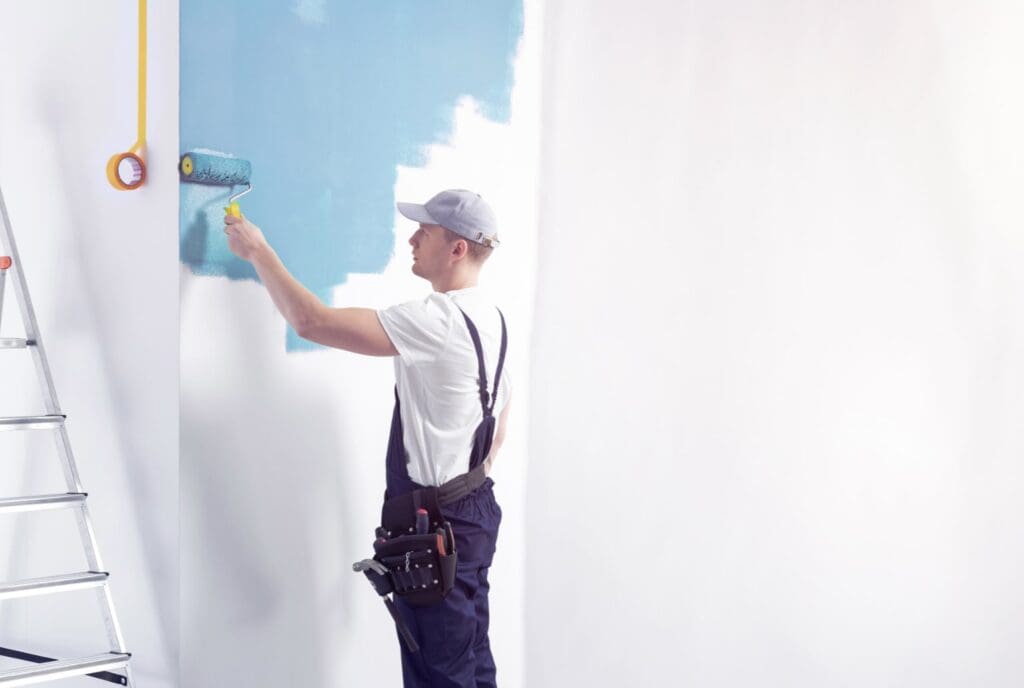
Sustainable Paint Options
Eco-Friendly Paint Choices for Your Home
Venturing into the realm of eco-conscious living extends far beyond recycling or cutting down on plastic use; it starts right at home with the walls surrounding us. Choosing eco-friendly paints is a responsible choice for the environment and a step towards a healthier home atmosphere. Let’s dive into environmentally friendly paint options and how they can impact more than just your wall colors.
What Makes Paint Eco-Friendly?
Eco-friendly paints, often labeled as low-VOC or zero-VOC, contain minimal volatile organic compounds and harmful chemicals that evaporate into the air and contribute to atmospheric pollution. These greener alternatives use water as a solvent instead of petrochemical-based ingredients, reducing toxic emissions and improving indoor air quality. When shopping for eco-friendly paints, look for certifications like Green Seal or GREENGUARD, ensuring the products meet strict chemical emission limits.
The Benefits of Natural Paint Ingredients
Natural or organic paints take eco-friendliness a step further. Made from natural raw ingredients like water, plant oils, resins, and natural dyes, these paints are biodegradable and harmless to the environment and your health. They’re particularly beneficial for those with allergies or chemical sensitivities. Plus, using natural paint offers a unique aesthetic with a range of earth-inspired pigments that create a warm and inviting atmosphere.
The Role of Recycled Paint
Recycled paint is another sustainable option that helps the planet by reducing waste. It’s collected from unused paint portions, then remixed and retinted to create new colors. This process gives old paint a new lease on life and uses less energy and resources than manufacturing new paint from scratch.
Applying Eco-Friendly Paints
The application process remains largely the same when switching to eco-friendly paint options. However, it’s worth noting that natural paints may require different preparation or application methods to achieve the best finish, such as additional priming or a specific technique. Always read the manufacturer’s guidelines to ensure proper use and optimal results.
Maintenance and Durability
Perhaps you’re wondering if eco-friendly paints hold up against their conventional counterparts. The answer is a resounding yes. Advances in green technology have improved the durability and coverage of eco-friendly paints, meaning you don’t have to sacrifice performance for the environment’s sake. Some natural paints are known for their breathability, allowing walls to “breathe” and reducing the likelihood of mold or mildew build-up in your home.
Color Trends and Eco-Friendly Paints
The rise of eco-friendly living has also influenced color trends. Paint companies are often inspired by the natural world, creating palettes that reflect a desire for sustainability and connection with the environment. You’ll find a plethora of hues that are not only gorgeous but also created with the planet in mind.
Disposal and Recycling of Eco-Friendly Paints
Proper disposal of any paint, even eco-friendly options, is crucial for environmental protection. Never pour paint down the drain. Instead, look for local recycling programs for leftover or old paint. Many communities offer paint recycling services that ensure the products are handled responsibly.
The Cost of Choosing Green
While eco-friendly paints might cost slightly more upfront, consider the long-term benefits to your health and the environment. Investing in green paint extends beyond your walls, contributing to a more significant movement of conserving and protecting our planet.
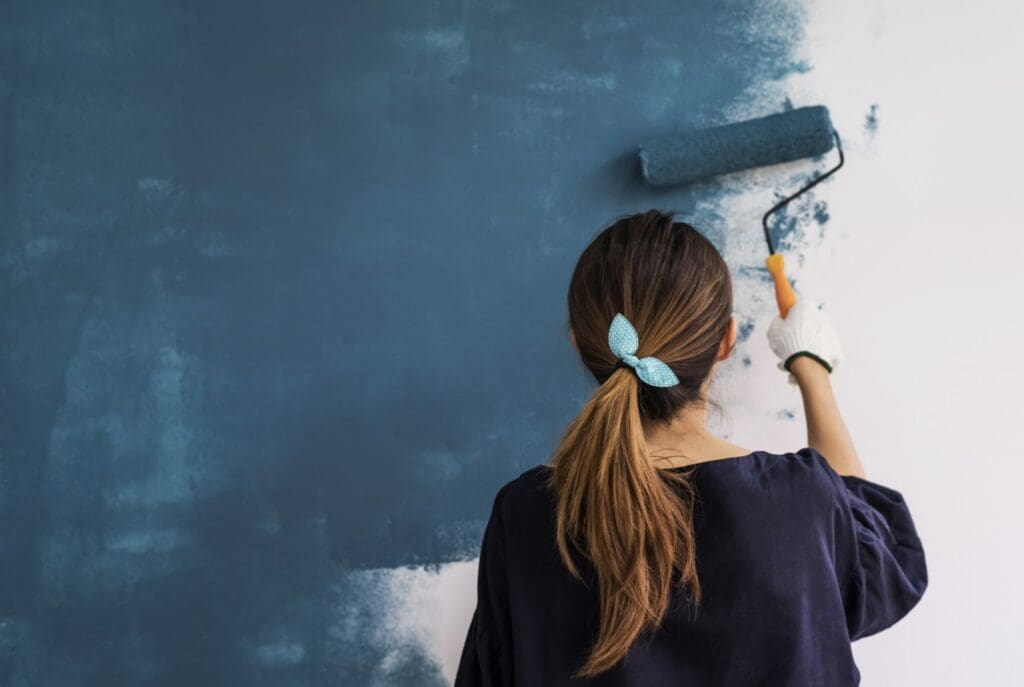
DIY Paint Projects and Techniques
Embrace the Ombre Effect
Ombre, a gradation of tones that flow from light to dark, adds an arresting visual to any wall. Depending on your color choice, it can give rooms a tranquil underwater effect or the warmth of a sunset. This technique works best on a feature wall and when complemented with minimalist decor.
Creative Stenciling
Stencils are a fantastic way to introduce elaborate patterns or imagery without the commitment or price tag of wallpaper. From geometric shapes to floral designs, stenciling allows for a customized motif. Consider using a subtle stencil over a painted wall or a bold design to transform a bare space into a focal point.
Make Use of Gloss and Matte
Alternating between matte and gloss finish can create a subtle but impactful design. Use the same color in two finishes to create a stripe or pattern revealed as light hits the surface at different angles. This sophisticated approach adds depth and intrigue without overwhelming the room with color.
Metallics to Add Glamour
Consider incorporating a metallic finish such as gold, silver, or copper for a touch of luxury. Metallics reflect light beautifully, creating a dazzling effect like an accent wall or detailing. Pair with rich textures elsewhere in the room to invite a lush, opulent atmosphere.
Stripes for Dimension
Stripes can dramatically alter the perception of space. Vertical stripes draw the eye upward, creating a sense of height in low-ceiling rooms, while horizontal stripes can make a narrow space seem more expansive. Opt for contrasting colors for boldness or monochromatic stripes for a more understated elegance.
Texture with Painting Techniques
Beyond color, texture plays a crucial role in enriching the feel of a space. Techniques like rag rolling, sponging, or color washing can give walls a tactile dimension. Depending on the tools and techniques employed, these methods can convey a rustic, weathered look or a delicate watercolor effect.
Chalkboard Walls for Function and Fun
Transform a regular wall into a functional, interactive space with chalkboard paint. A chalkboard wall is ideal for kitchens, children’s rooms, or creative workspaces. It is a blank slate for grocery lists, doodles, or daily quotes. Pair it with bright chalk colors to bring out a playful vibe in any room.
Ceilings as the Fifth Wall
Often overlooked in design, ceilings offer a dramatic canvas. Make them pop with bold paint, drawing the gaze upward and making the room appear grander. Soft sky blues mimic the outdoors, while a dark hue can develop a cozy, enveloping feel.
Two-Tone Walls
Create an impact by painting the lower half of your walls in one color and the upper half in another, using a chair rail or tape for a crisp divide. This approach can marry different color palettes effectively and give the illusion of wainscoting or a dado rail for a classic look.
Using Paint to Create Faux Architectural Features
If your space lacks architectural interest, paint can help. You can create faux moldings, panels, or trim by taping off sections and adding color. With precision and creativity, paint can mimic the look of intricate carpentry, adding character to bland walls.
These innovative paint techniques are not mere trends but tools to elevate your living environment. By applying paint in these transformative ways, you can assert your style, enhance spatial dynamics, and achieve a fresh look that speaks volumes about your aesthetic. Remember, the beauty of painting lies in its ability to color a wall and reshape a room’s experience. With a brush, a roller, or a sponge as your instrument, let your creativity take the reins and watch your space come alive.
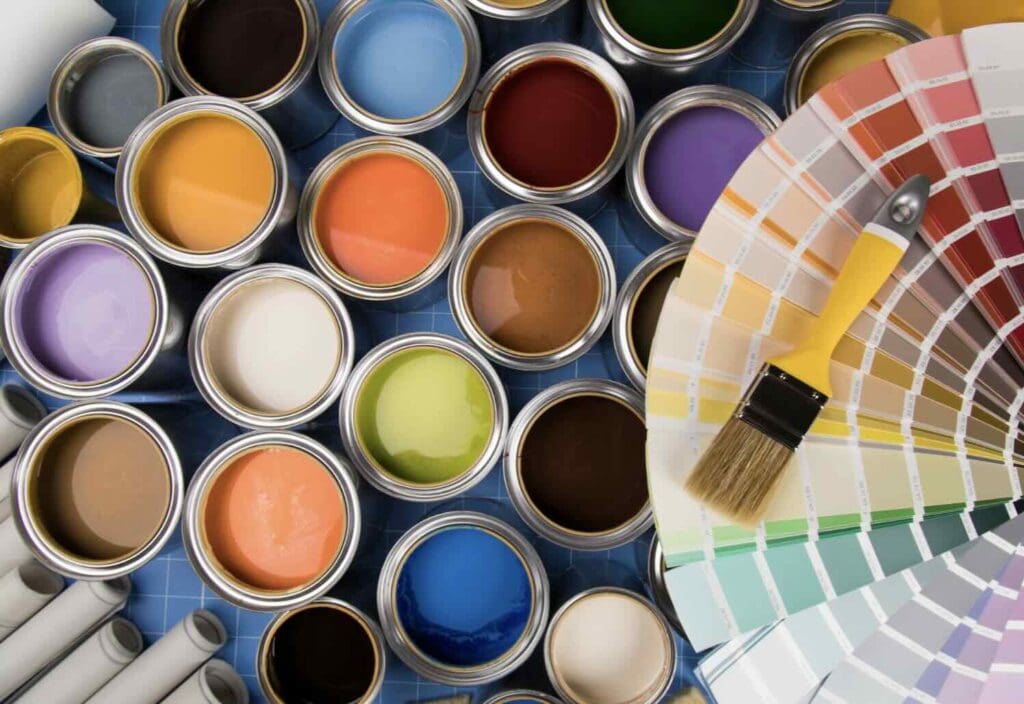
Armed with the insights and resources from this journey through color and creativity, you’re now ready to grab that paintbrush and transform your living space into a masterpiece that’s uniquely you.
Remember, every stroke of color is a chapter of your story, so paint bold! Soon enough, you’ll find that with the right hues, techniques, and inspiration, your home can become the oasis of your dreams, perfectly tuned to every mood and moment.
At Mondoro, we manufacture home decor products that are not unique but are usually handmade or partly handmade, with some machinery used to help the products be more economical. We would love to talk to you if you want to find unique products to manufacture your home decor collection in Asia.
If you are interested in seeing how Mondoro can help you with your handmade home decor products – we would love to talk to you about how we can help you.
Find out more about how Mondoro can help you create, develop, and manufacture excellent home decor and furniture products – don’t hesitate to contact me, Anita. Check out my email by clicking here or become a part of our community and join our newsletter by clicking here.
Mondoro gives out a FREE Lookbook to anyone interested. You can receive a copy of our latest Lookbook by clicking here.
Listen to our Podcast called Global Trade Gal. You can find it on all major podcast platforms. Try out listening to one of our podcasts by clicking here.
Subscribe to our Mondoro Company Limited YouTube Channel with great videos and information by clicking here.
Related Content
Home Decor And Furniture Designs For The Perfect Entrance Hallway
Furniture, decorative mirrors, wall art, lamps, lighting, and home decor accessories are all great items in your entrance hallway. The hallway entrance space can help set the mood for your entire home, so it is a crucial design space to consider whenever you are decorating your home.
You can discover more by reading Home Decor and Furniture Designs For The Perfect Entrance Hallway by clicking here.
What Is Home Decoration? And How Are Items Manufactured
What exactly does home decoration entail? How is it distinct from other forms of decoration, such as commercial or event decoration? Read on as we delve deep into the home decoration world, breaking down its essential components, significance, and manufacturing nuances.
Click this link to learn about What Is Home Decoration? And How Are Items Manufactured.
Why Do Handmade Home Decor Products Have A Soul?
We live in a world where so much of what we have is mass-produced by machines, yet there is something uniquely special about handmade products – especially handmade home decor products. Like Thom Filica pointed out, I also believe homemade products have a soul.
You can discover more by reading Why Do Handmade Home Decor Products Have A Soul? by clicking here.

